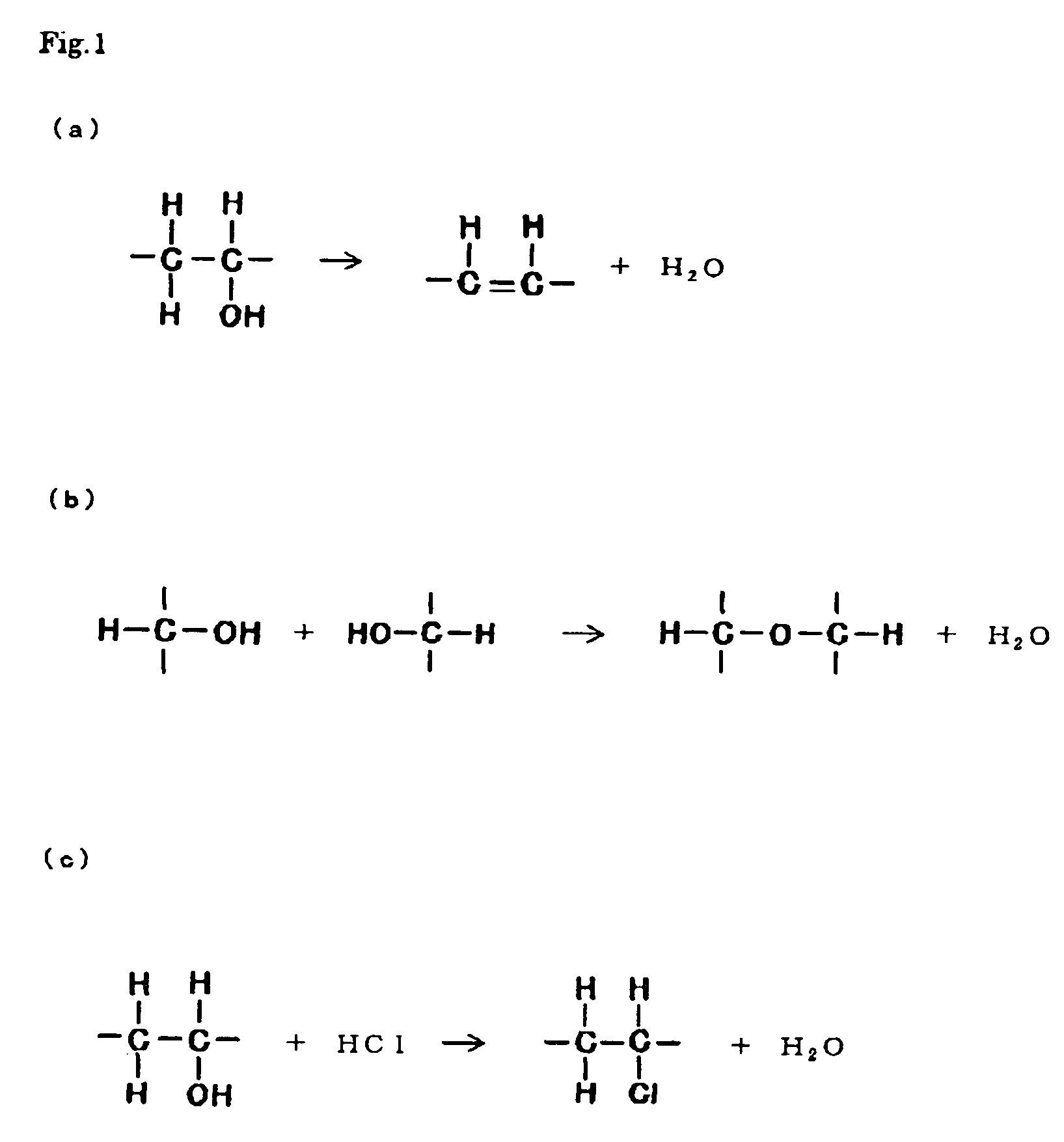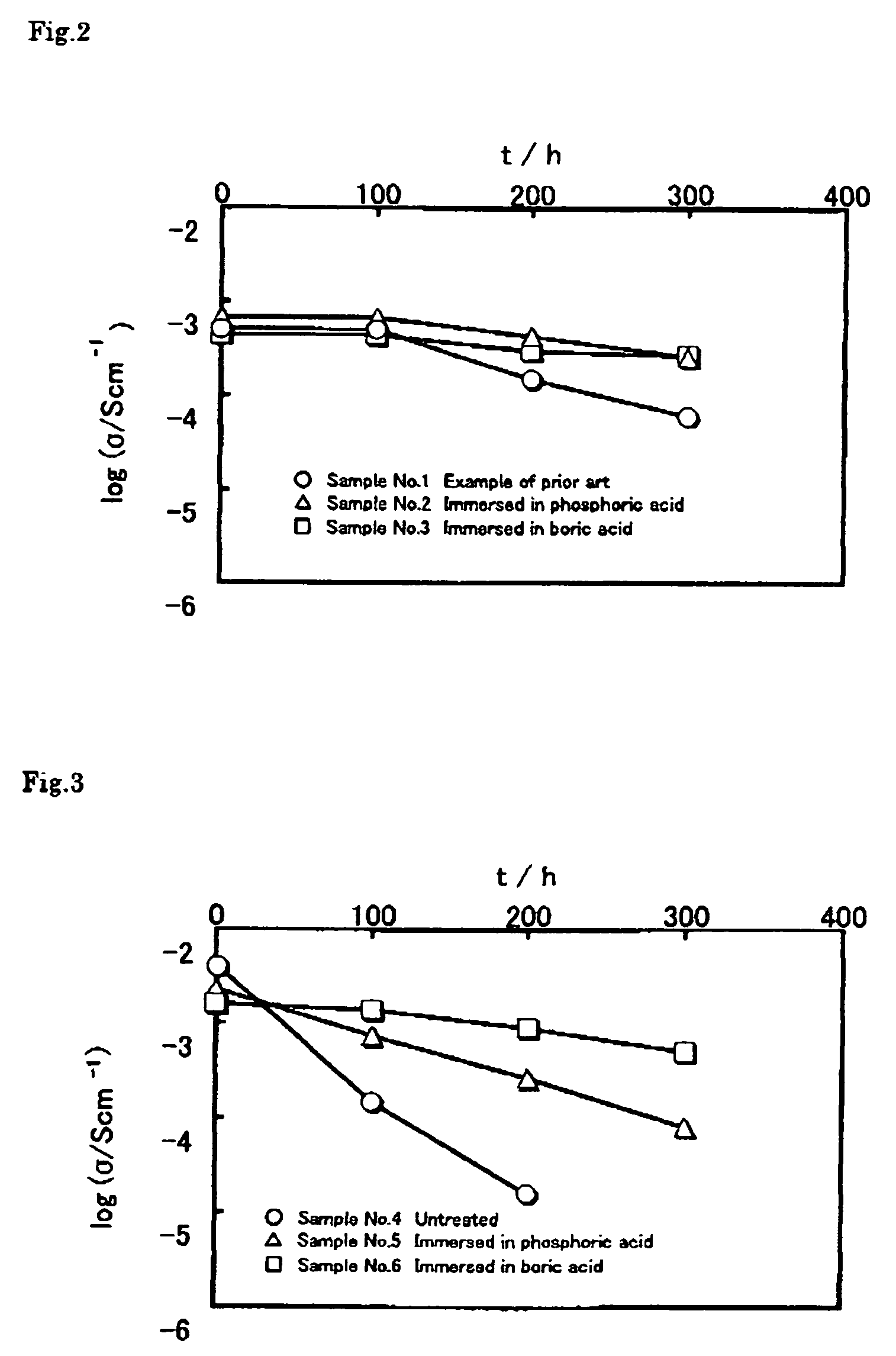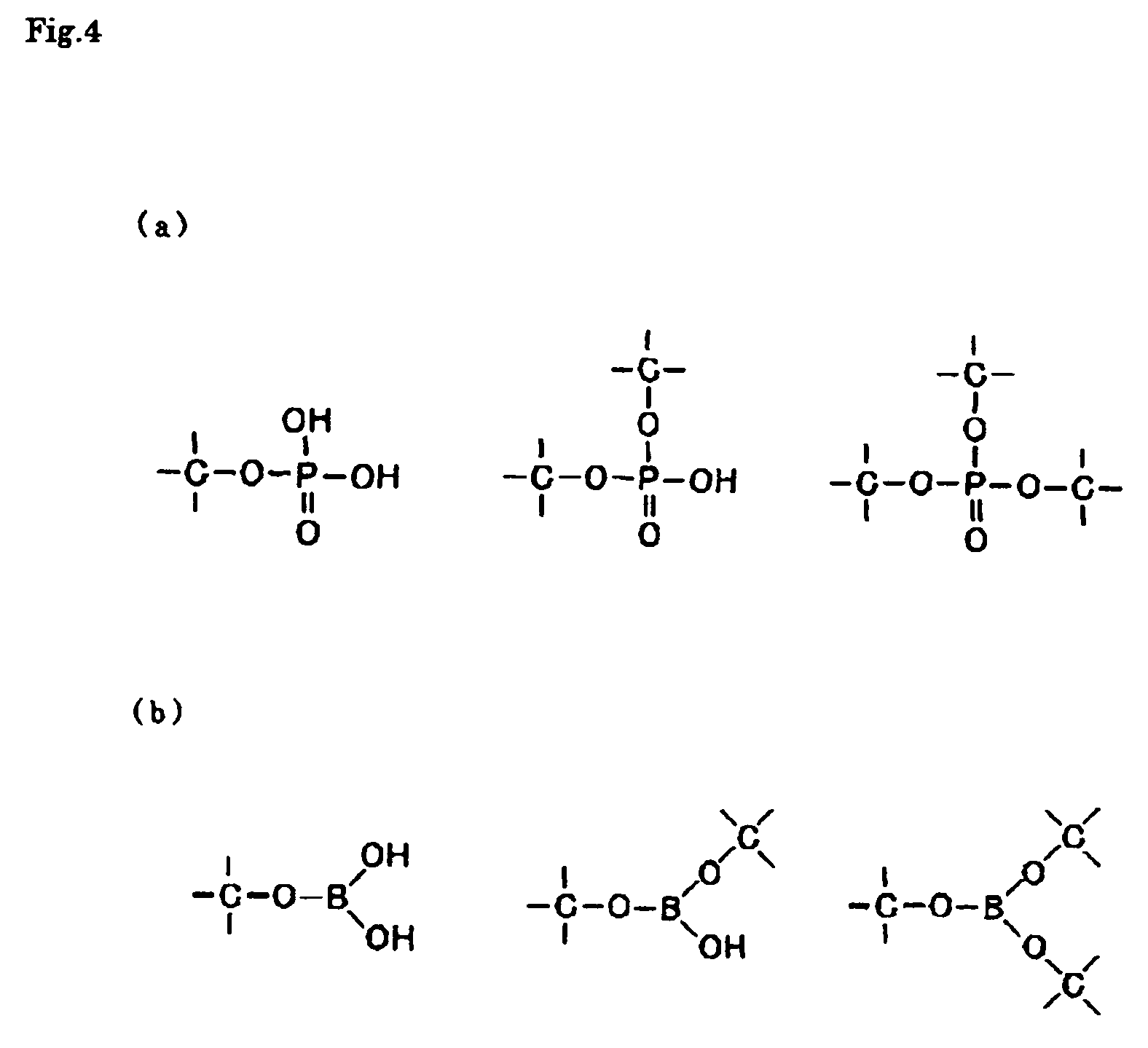Solid electrolyte and electrochemical system including the solid electrolyte
a solid electrolyte, electrochemical technology, applied in the manufacture of final products, fuel cell details, conductive materials, etc., can solve the problems of large system scale, increased difficulty in and increasing the difficulty of detecting and detecting the effect of reducing the risk of performance degradation
- Summary
- Abstract
- Description
- Claims
- Application Information
AI Technical Summary
Benefits of technology
Problems solved by technology
Method used
Image
Examples
embodiment 1
[0048] To make a solid electrolyte membrane, firstly 23 cc of the mixed aqueous solution of 7.5 weight percent sodium tungstate dehydrate (Na2WO4.2H2O), 3 weight percent trisodium phosphate (Na3PO4.12H2O) and 24 cc of aqueous solution of 3 weight percent sodium silicate were added into 100 cc of 10 weight percent aqueous solution of polyvinyl alcohol 3100 to 3900 in average degree of polymerization and 86 to 90% in degree of saponification to prepare the raw material aqueous solution. While this raw material aqueous solution was agitated, 12 cc of hydrochloric acid of 2.4M in concentration was dropped to neutralize and prepare the viscous precursor aqueous solution. This precursor aqueous solution was put in an airtight container and evacuated by vacuum pump for defoaming, and was kept at 40° C. in temperature for one hour and for 15 hours at normal temperature so that the compounding process could be promoted.
[0049] In the next, a polyester film was put on the flat and smooth pede...
embodiment 2
[0057] To prepare the raw material aqueous solution, 23 cc of mixed aqueous solution containing 7.5 weight percent of sodium tungstate dihydrate (Na2WO4.2H2O), 3 weight percent of trisodium phosphate (Na3PO4.12H2O), and 24 cc of aqueous solution containing 3 weight percent of sodium silicate were added to 100 cc of 10 weight percent aqueous solution containing 86 to 90% polyvinyl alcohol that was 3100 to 3900 in average degree of polymerization and 86 to 90% in degree of saponification. To neutralize it, 11 cc of hydrochloric acid of 2.4M in concentration plus additional 13 cc of 30 weight percent phosphoric acid were dropped in this raw material aqueous solution with agitation. In this way, the viscous precursor aqueous solution was prepared. Moreover, 6.7 weight percent of boric acid water solution was added in addition to hydrochloric acid and phosphoric acid to prepare another precursor aqueous solution in a manner similar to the above.
[0058] After being defoamed, these precurs...
embodiment 3
[0061] The samples No. 1 and No. 3 in Embodiment 1 and the sample No. 7 in Embodiment 2 were kept at 120° C. in the dry state (under atmosphere) to check the variations in ion conductivity with time. The conductivity was checked under the same condition as Embodiment 1 or Embodiment 2 where the temperature was 60° C. and the relative humidity was 90%. FIG. 7 shows the results. The sample No. 1 where the precursor aqueous solution after neutralization did not contain phosphoric acid or boric acid, and did not undergo any treatment shows sharp decrease in conductivity in the dry circumstances than in the humid circumstances of Embodiment 1. However, the sample No. 3 immersed in the solution containing boric acid in advance and the sample No. 7 where the precursor aqueous solution after neutralization operation contained phosphoric acid clearly shows less decrease in conductivity.
PUM
| Property | Measurement | Unit |
|---|---|---|
| Temperature | aaaaa | aaaaa |
| Temperature | aaaaa | aaaaa |
| Temperature | aaaaa | aaaaa |
Abstract
Description
Claims
Application Information
 Login to View More
Login to View More - R&D
- Intellectual Property
- Life Sciences
- Materials
- Tech Scout
- Unparalleled Data Quality
- Higher Quality Content
- 60% Fewer Hallucinations
Browse by: Latest US Patents, China's latest patents, Technical Efficacy Thesaurus, Application Domain, Technology Topic, Popular Technical Reports.
© 2025 PatSnap. All rights reserved.Legal|Privacy policy|Modern Slavery Act Transparency Statement|Sitemap|About US| Contact US: help@patsnap.com



